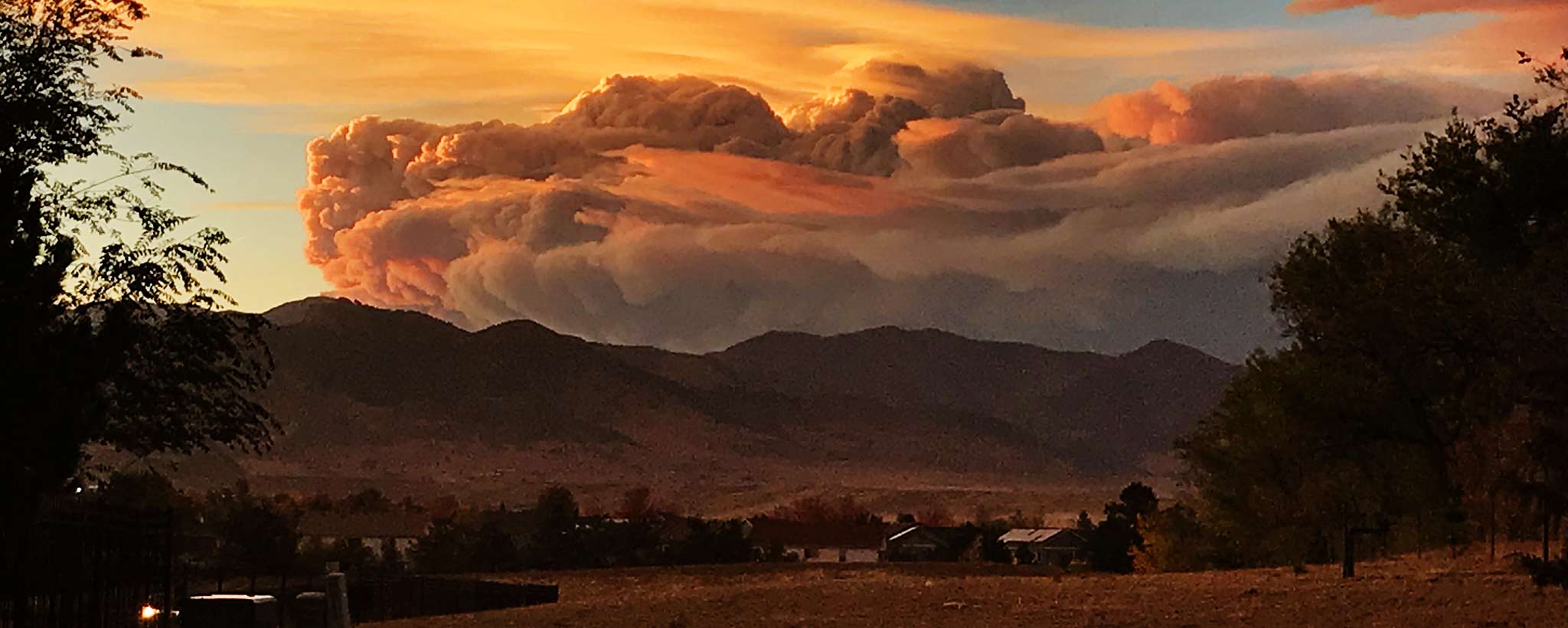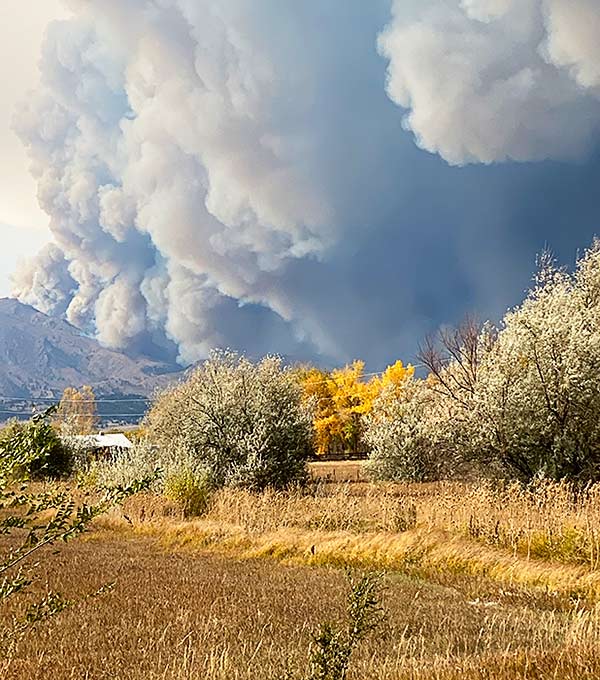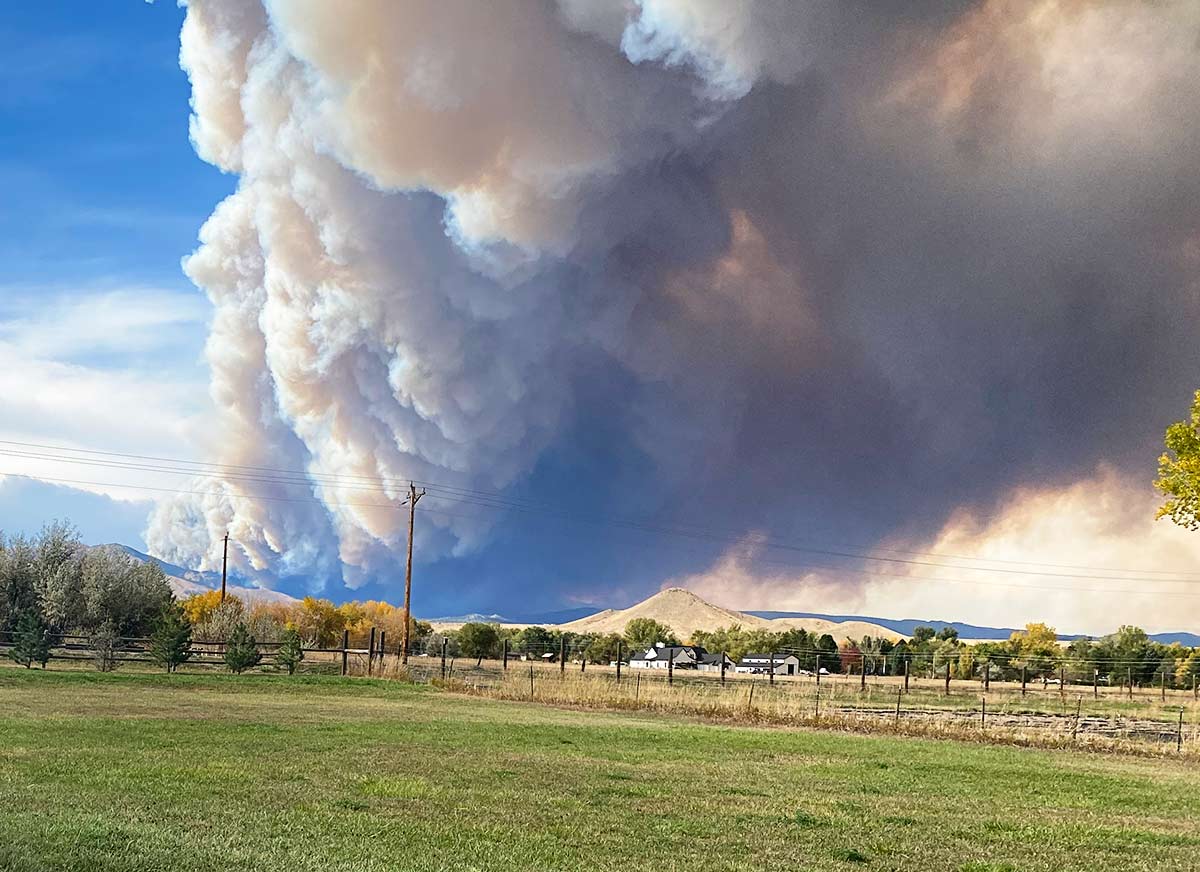
The Wildfire Seasons
As the weather warms and spring gives way to summer, all those wonderful warm weather activities kick into gear. The scent of flowers blooming, BBQ’s grilling, suntan lotion, fresh cut grass, and smoke in the air, wait, smoke in the air? That’s right, warm weather also heralds in wildfire season across the Rocky Mountain and Western states, bringing with it those occasional hazy days and the faint, or sometimes not so faint, odor of smoke.
Often these early season southwestern fires are the result of lightning during summer storms, but construction, landscape maintenance, campfires, and outdoor recreation can play a significant role in wildfire ignitions.
Wildfire season generally starts in the Midwest around March and April with wind-driven range fires impacting ranching and farming communities from Texas, across Oklahoma and Kansas and into Nebraska, although even states like Colorado have experienced deadly wildfires in March and April after abnormally dry winters. Traditionally the early season wildfires, though often quite destructive, are short duration fires burning for several days and up to a week before a cold front brings rain and snow allowing firefighters to gain the upper hand.

June brings wildfires to the southwest impacting Arizona and New Mexico. Often these early season southwestern fires are the result of lightning during summer storms, but construction, landscape maintenance, campfires, and outdoor recreation can play a significant role in wildfire ignitions. By July, wildfire season is in full swing across the Rocky Mountains and the Western states including Arizona, New Mexico, Colorado, Wyoming, Montana, Utah, Idaho, California, Oregon, and Washington.
California Fires
By Autumn, California’s Santa Ana winds start blowing in from the desert toward the coast, bringing high wind speeds, elevated temperatures, and low humidity. These dry winds create critical fire weather conditions in the coastal regions. Historically some of California’s largest, most damaging wildfires occur in the fall during Santa Ana wind events, often involving overhead utilities impacted by the high winds. In addition to the Santa Ana winds, California recently experienced one of their longest drought periods extending between the years 2011 and 2016 which stressed much of California’s brushy vegetation, creating perfect conditions for explosive wildfire growth as seen in recent years.
While the winter of 2016-2017 was California’s wettest on record, statistics can be deceiving. Most of the moisture fell in central and northern California, filling reservoirs to the point water was being released into the Pacific Ocean to prevent flooding because of spillage. Having full reservoirs is wonderful for the cities and agricultural regions, but natural vegetation doesn’t benefit from full reservoirs, and in fact the increase in ground moisture just causes a growth spurt in those brushy fuels that have been stunted by drought. According to NOAA, as late as July 2020, central and northern California was once again experiencing moderate to extreme drought, and all those brushy, fire prone fuels that enjoyed a growth spurt are again very dry and ready to burn.

Wildfire Causes & Origins
If you think about it, fires don’t start in trees, they start in ground fuels such as grasses, brush, and duff. Regardless of winter moisture or yesterday’s rainstorm, 2-3 hours of hot dry weather today make these fine fuels ready to burn. Miss watering your yard for a weekend, and that lush green carpet of grass starts turning brown and it takes 3-4 days of good watering to green it up again. Natural, light flashy fuels react the same way except we can’t just green ‘em up with a yard sprinkler.
There are multiple factors affecting the cause of wildfires and wildfire growth, factors not seen in a structure fire. Investigating the cause of a wildfire requires a specific set of skills, and the process of determining the origin and cause of a wildfire differs significantly from determining the origin and cause of a structure fire.
While structure fires, including vehicles, can for the most part all be labeled as compartment fires with ventilation-controlled fire behavior, wildfires have unlimited ventilation with fuels, terrain and weather affecting wildfire growth and behavior. The difference is so significant that while NFPA 921, the guidebook for structure fire investigators and the courts rely on for compartment fire origin and cause guidance, NWCG ( National Wildfire Coordinating Group) PMS 412 is the text wildfire investigators and the courts rely on in addition to NFPA 921 for guidance on wildfire origin and cause investigations.
Determining the Area of Origin
Wildfire O&C investigators must be able to understand how weather patterns, terrain (including slope and aspect), and fuels affect fire growth during those early stages of a wildfire. They also need to understand and be able to read the effects fire has on a variety of fuels, from fine natural grass, shrubs, litter, and rocks, to large towering trees and how fuels of the Rocky Mountain regions differ from fuels in Southern California.
…in a structure fire you work from the area of least damage back to the area of greatest damage. …in a wildfire the investigator works from the area of greatest damage back to the area of least damage.
The wildfire investigator needs to be able to differentiate between actual fire movement patterns, and fire patterns generated by burning a large fuel package such as a burning mesquite bush, which by itself generates a significant BTU output. Even the process of determining the area of origin is different, in a structure fire you work from the area of least damage back to the area of greatest damage. To determine the area of origin in a wildfire the investigator works from the area of greatest damage back to the area of least damage.
The tools and equipment required to conduct a wildfire origin and cause investigation are also unique to wildfire. Tools such as landscape pin flags, GPS, compasses, laser range finders, metal detectors, binoculars, and sifting tools to name a few are all required to conduct a wildfire origin and cause investigation according to NWCG PMS 412. These same tools are not part of a structure fire investigator’s toolbox. In addition to the required tools, the wildfire investigator must be prepared to spend multiple days or weeks on scene, and to be self-sufficient for food, water, environmental conditions, and have the appropriate PPE including Nomex pants and shirt.
Choosing a Qualified Expert
Too many times a well-intended structure fire investigator accepts a wildfire investigation assignment from a good client without realizing what it takes to conduct a wildfire investigation, and what it takes to qualify as an expert in a wildfire origin and cause trial or deposition. The client who just spent a significant amount of time, energy, and money on the investigation is then left without an expert able to testify in court, and by the time it goes to court, the scene is long gone due to regrowth of vegetation, and damage resulting from normal weather conditions.
When choosing an expert to hire for your wildfire, take the time to read his or her CV, have they qualified as a wildfire origin and cause expert in court before, how many times. Does their CV show a significant amount of education in wildfire O&C, have they attended multiple courses and seminars, how many wildfires have they investigated, have they taken and passed the NWCG FI-210 training? Are they currently or have they been “Red Carded” as a wildfire investigator through the NWCG? If your prospective expert doesn’t meet these standards, politely say thanks I’ll catch you next time, and keep looking.
Golden Forensics has a qualified wildfire investigator that can attend to all your wildfire investigation needs. With over 23 years of wildfire investigation experience and over 200 wildfire investigations under his belt, including multiple Billion-dollar wildfire investigations, you can be assured our wildfire investigator has the required skills, tools, and experience to provide you with a solid wildfire origin and cause. Please give Golden Forensics a call the next time Smokey Bear comes knocking.


